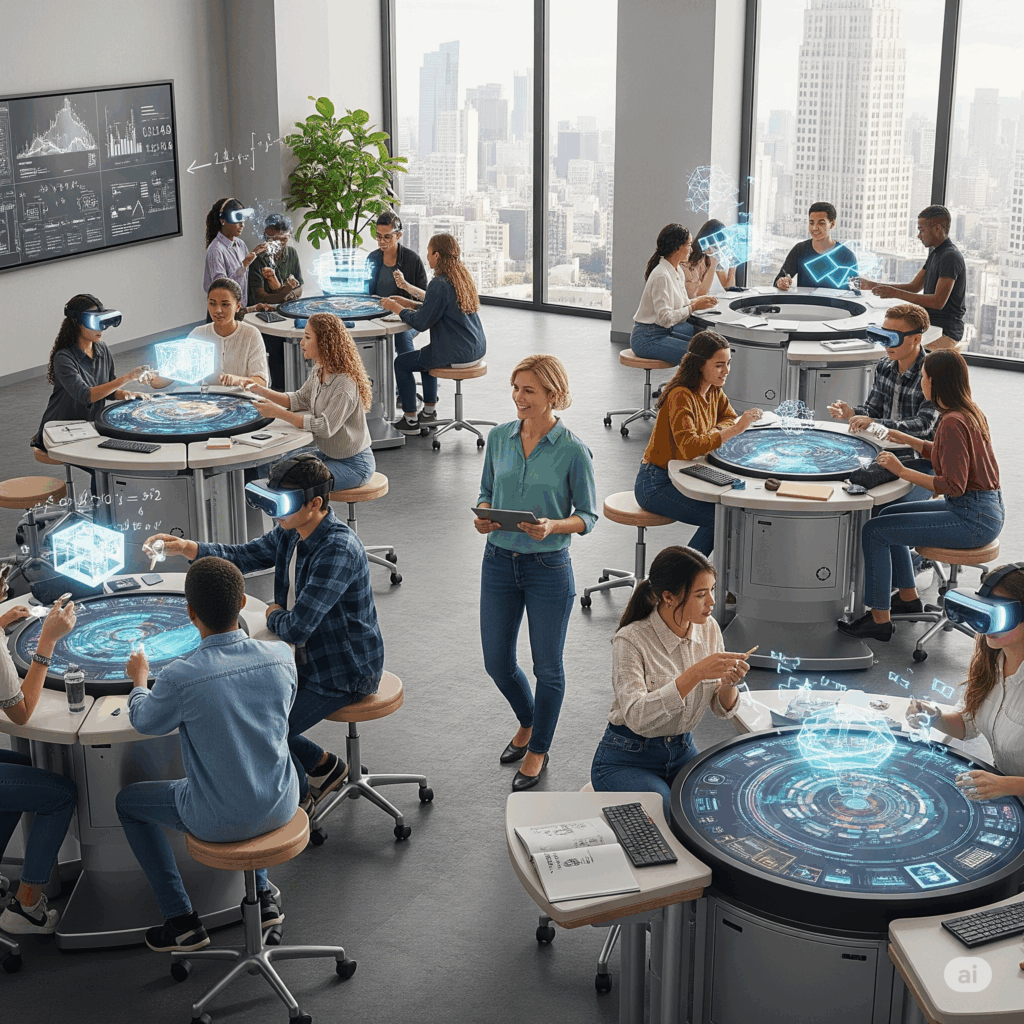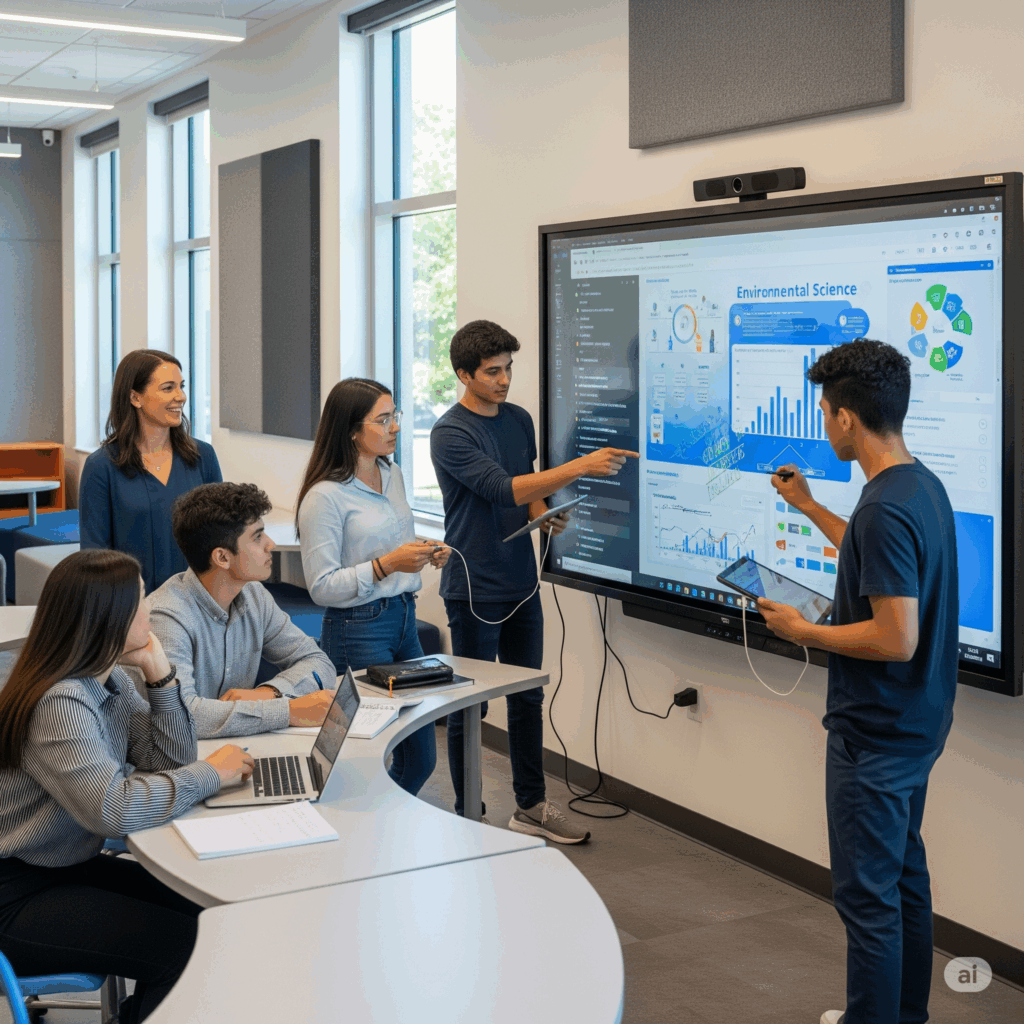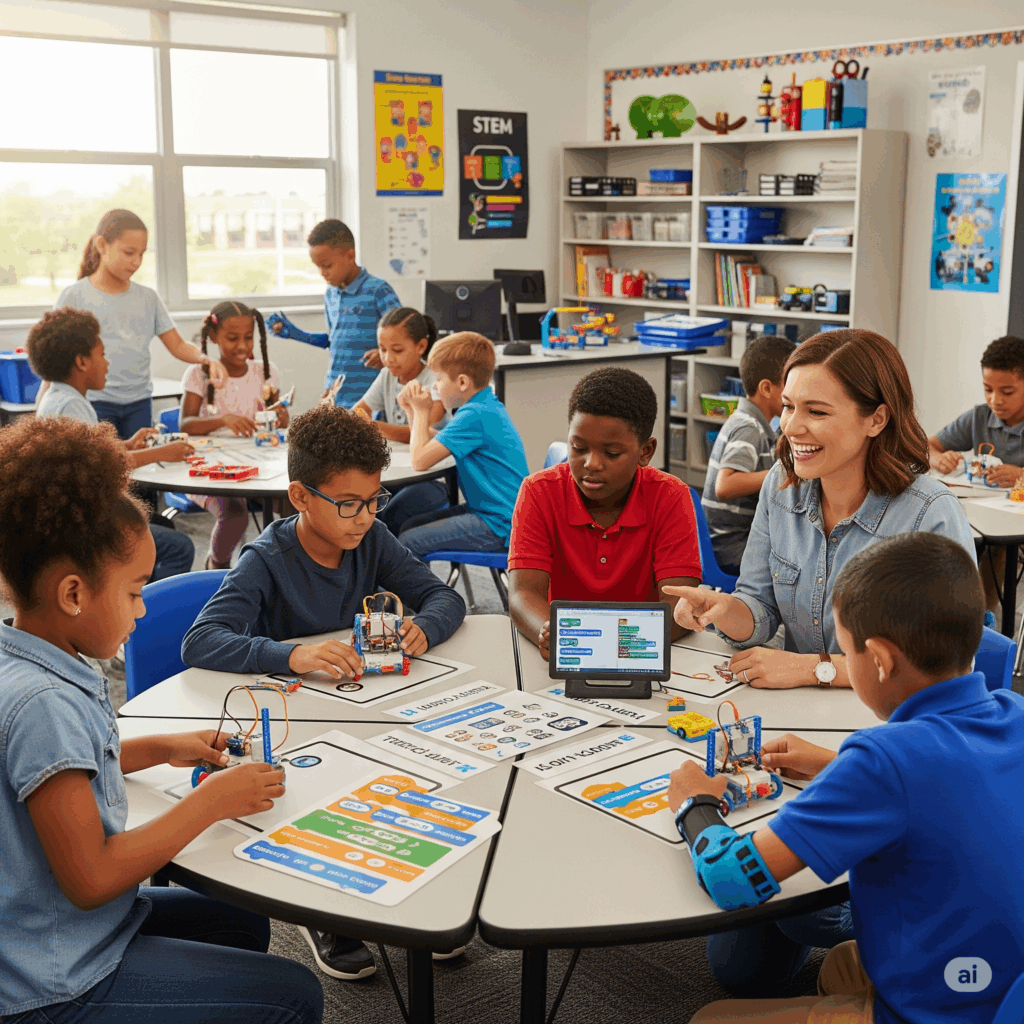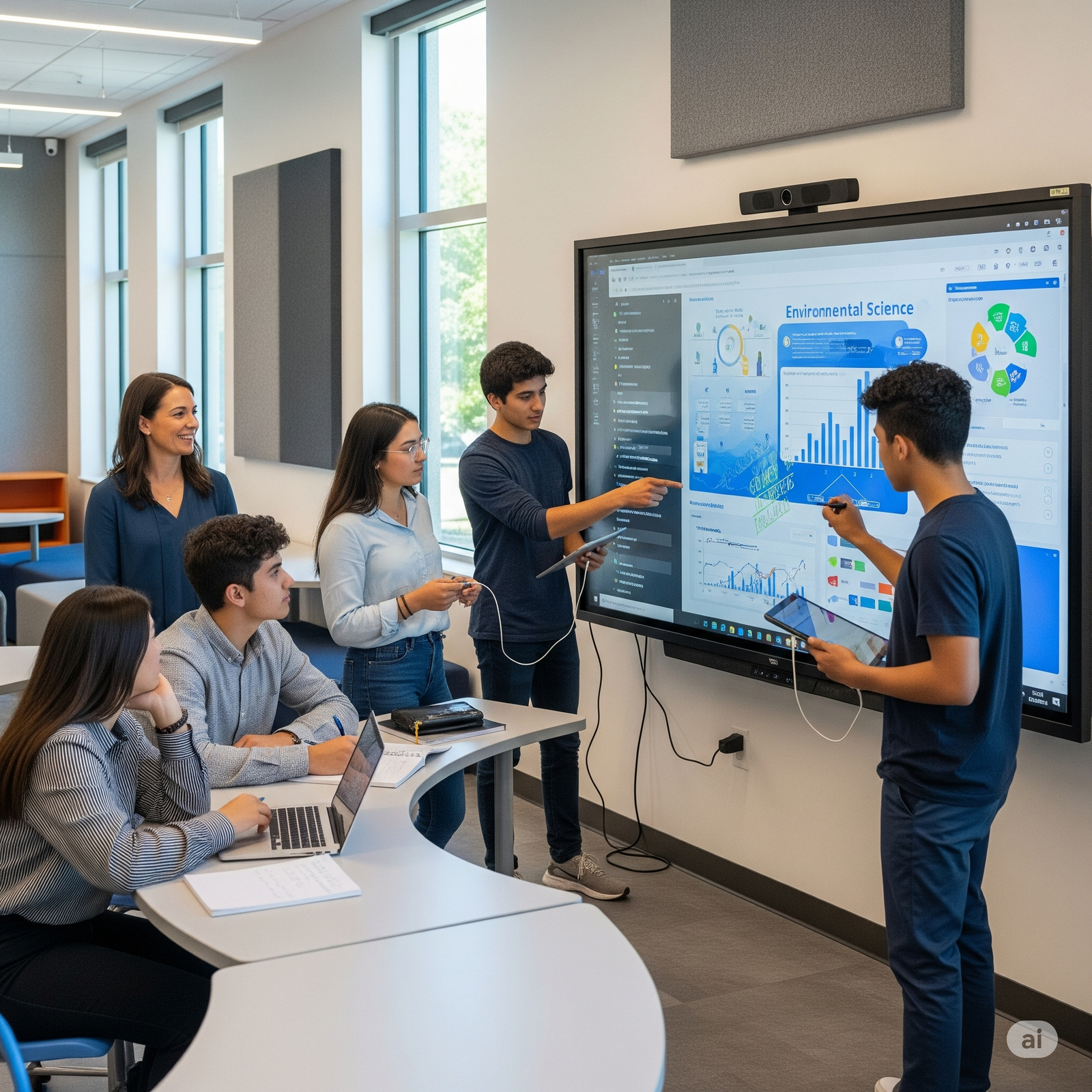The landscape of education in the United States is undergoing a profound and rapid transformation. Fueled by the relentless march of technology and a growing understanding of how students learn best, traditional classroom models are evolving into dynamic, personalized, and increasingly engaging learning environments. The future of learning in US classrooms is being shaped by a confluence of innovative technologies and shifting pedagogical approaches, promising to redefine the educational experience for both students and educators.
For decades, the image of the US classroom was largely static: rows of desks facing a teacher at a blackboard, rote memorization often prioritized over critical thinking, and a one-size-fits-all approach to instruction. However, the 21st century demands a different kind of graduate – one equipped with adaptability, problem-solving skills, digital literacy, and the capacity for lifelong learning. This need, coupled with the transformative power of technology and insights from learning sciences, is driving a significant shift in how teaching and learning are conceptualized and implemented.
The Technological Revolution in Education
Technology is no longer a peripheral tool in education; it is becoming increasingly integral to the very fabric of the learning process. From basic internet access and interactive whiteboards to sophisticated AI-powered platforms and immersive virtual reality (VR) experiences, technology is offering unprecedented opportunities to enhance engagement, personalize learning, and expand access to educational resources.

Personalized Learning through AI and Data Analytics: One of the most significant impacts of technology is the rise of personalized learning. AI-driven platforms can analyze vast amounts of student data – from their performance on assignments to their learning styles and paces – to tailor educational content and pathways to individual needs. These systems can identify areas where a student is struggling and provide targeted support, offer enrichment activities for those who are excelling, and adapt the delivery of information to suit different learning preferences. This move away from a standardized curriculum towards individualized learning journeys holds the promise of maximizing each student’s potential and fostering a deeper understanding of concepts.
Immersive Learning with VR and AR: Virtual and augmented reality technologies are poised to revolutionize how students experience and interact with learning materials. VR can transport students to historical sites, the human body, or even distant galaxies, creating immersive and memorable learning experiences that traditional methods cannot replicate. For example, students could virtually dissect a frog, explore ancient Rome, or witness the process of photosynthesis firsthand. Augmented reality overlays digital information onto the real world, offering interactive and engaging ways to learn about everything from anatomy to engineering principles within the familiar classroom environment. These technologies can make abstract concepts more concrete and accessible, fostering deeper engagement and understanding.
Expanding Access and Flexibility with Online and Blended Learning: The COVID-19 pandemic highlighted the potential and challenges of online and blended learning models. While the rapid shift to fully remote instruction exposed significant inequities, it also accelerated the development of more sophisticated online learning platforms and pedagogical approaches suitable for virtual environments. Blended learning, which combines online and in-person instruction, offers a flexible and potentially more personalized approach. Students can access digital resources and complete certain tasks at their own pace online, while in-person class time can be dedicated to collaborative projects, hands-on activities, and deeper discussions facilitated by the teacher. This flexibility can cater to diverse learning needs and schedules, potentially expanding access to educational opportunities for students in geographically remote areas or those with specific learning requirements.
Fostering Collaboration and Communication: Technology also provides powerful tools for fostering collaboration and communication among students and between students and teachers. Online platforms, collaborative document editing tools, and video conferencing facilitate group projects, peer feedback, and real-time interaction, regardless of physical location. These digital tools can help students develop essential teamwork and communication skills crucial for success in the modern workforce. Furthermore, technology can bridge the gap between home and school, enabling more seamless communication and involvement for parents in their children’s education.

Shifting Pedagogies: Empowering Learners and Fostering Deeper Understanding
The integration of technology is most effective when coupled with pedagogical shifts that empower learners and move away from passive reception of information towards active engagement and critical thinking. Several key pedagogical approaches are gaining prominence in reshaping US classrooms:
Student-Centered Learning: This approach places the student at the heart of the learning process. Instruction is tailored to individual needs and interests, and students are encouraged to take ownership of their learning through inquiry-based projects, self-directed study, and personalized learning pathways. Teachers act as facilitators and guides, supporting students in their exploration and discovery rather than simply delivering lectures. Technology plays a crucial role in enabling student-centered learning by providing access to diverse resources, tools for self-assessment, and platforms for personalized learning experiences.
Inquiry-Based Learning: This pedagogical approach emphasizes asking questions, investigating problems, and constructing knowledge through exploration and discovery. Students are encouraged to formulate their own questions, design experiments, analyze data, and draw conclusions. Technology can support inquiry-based learning by providing access to vast databases of information, simulation tools, and platforms for data analysis and visualization. This approach fosters critical thinking, problem-solving skills, and a deeper understanding of concepts through active engagement.
Project-Based Learning (PBL): PBL involves students working on real-world projects that require them to apply knowledge and skills from multiple disciplines. These projects often involve collaboration, research, problem-solving, and the creation of a tangible product or presentation. Technology is an invaluable tool for PBL, providing resources for research, communication, collaboration, design, and presentation. PBL fosters critical thinking, creativity, collaboration, and communication skills in a meaningful and engaging context.
Personalized Learning Pathways: While often enabled by technology, personalized learning is also a pedagogical shift that recognizes the unique learning styles, paces, and interests of individual students. Teachers work with students to develop individualized learning plans, offering choices in how they learn and demonstrate their understanding. This approach values student agency and aims to maximize learning outcomes by catering to individual needs. Technology can facilitate the creation and management of these personalized pathways, but the underlying pedagogical principle is the recognition of student individuality.

Challenges and Considerations
While the future of learning in US classrooms holds immense promise, several challenges and considerations must be addressed to ensure equitable and effective implementation:
The Digital Divide Revisited: While technology offers incredible potential, the digital divide – the gap in access to technology and digital literacy – remains a significant concern. Ensuring equitable access to devices, reliable internet connectivity, and effective digital literacy training for all students, regardless of their socioeconomic background or geographic location, is crucial to prevent technology from further widening existing achievement gaps.
Teacher Training and Professional Development: The successful integration of technology and new pedagogical approaches requires adequately trained and supported educators. Investing in ongoing professional development that equips teachers with the skills and knowledge to effectively use technology, implement student-centered strategies, and personalize learning is essential.
Data Privacy and Security: As technology becomes more integrated into education, concerns about student data privacy and security must be addressed proactively. Robust policies and safeguards are needed to protect student information and ensure responsible data collection and usage.
The Importance of Human Connection: While technology offers numerous benefits, it is crucial to remember the irreplaceable role of human interaction in the learning process. The social and emotional development fostered through face-to-face interactions with teachers and peers remains vital. The future of learning should strive for a balanced integration of technology and human connection.
Rethinking Assessment: Traditional assessment methods may not fully capture the skills and knowledge developed through technology-rich and project-based learning experiences. Educators need to explore and implement more authentic and performance-based assessment strategies that align with these evolving pedagogical approaches.
Conclusion
The future of learning in US classrooms is being actively shaped by the dynamic interplay of transformative technologies and evolving pedagogical philosophies. The promise of personalized learning, immersive experiences, expanded access, and student-centered approaches holds the potential to create more engaging, effective, and equitable educational opportunities for all students. However, realizing this potential requires a concerted effort to address the digital divide, invest in teacher development, prioritize data privacy, and maintain the crucial element of human connection in the learning process. By embracing innovation thoughtfully and strategically, the US education system can harness the power of technology and progressive pedagogies to prepare students for the challenges and opportunities of the 21st century and beyond. The classroom of the future will be a vibrant, dynamic, and personalized space where technology empowers learners and educators alike to unlock their full potential.










